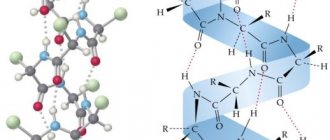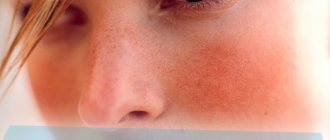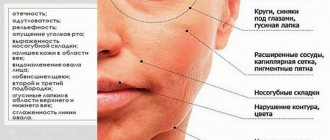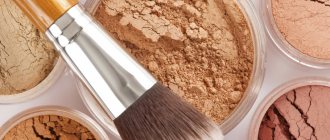What hormones affect the skin
- Estrogen . This hormone is called female. It stimulates cell regeneration and the production of elastin and collagen. Estrogen slows down the rate of hair growth and maintains normal activity of the sebaceous glands. Estrogen reduces the level of hyaluronidase, which destroys hyaluronic acid.
- Progesterone . The hormone is considered estrogen's "best friend." It solves the problem of puffiness and suppresses inflammation, maintains skin elasticity and the functioning of the nervous system.
- Testosterone . A woman's body produces small amounts of testosterone. This hormone is very useful for the skin, as it promotes its renewal. However, in large quantities, testosterone leads to strong activity of the sebaceous glands and rapid hair growth.
- Cortisol . Stress hormones in excess amounts inhibit protein synthesis, reduce immune defenses, and interfere with the maintenance of strong bones. This hormone is undesirable in our body. However, it is triggered on its own as a result of stress.
Hormonal imbalance
Skin problems can be caused by hormonal imbalance, regardless of its type.
Women aged 35 to 50 years old face the problem of estrogen dominance and low progesterone levels. Such hormonal changes can be caused by stress, aging, exposure to toxins, and an unhealthy lifestyle.
Hormone imbalance is manifested by the following symptoms:
- bloating;
- PMS;
- soreness of the mammary glands;
- weight gain;
- endometriosis.
During menopause in women, the level of female sex hormones decreases sharply, but the amount of testosterone is relatively high. This combination of hormones can lead to acne, baldness, and increased facial hair growth.
The condition of the skin is affected by low levels of thyroid hormones. This imbalance causes the following symptoms in women:
- peeling and itching of the skin;
- dry skin, which contributes to the appearance of wrinkles;
- swelling of the face;
- hair thinning;
- weight gain;
- deterioration of the nails.
Hormonal imbalance in women can occur for a number of reasons. Unfortunately, one of the serious reasons is the modern lifestyle, saturated with a polluted environment, stress, toxic influences, lack of physical activity and poor nutrition. This means that almost every second woman between 35 and 50 years old suffers from hormonal imbalance.
Menopause, hormone imbalances and skin conditions
Typical problems appear in women during the menopausal and perimenopausal periods. This is due to a decrease in estrogen and progesterone levels. In this case, the following characteristics are observed:
- The rate of cell renewal decreases, the skin becomes rough.
- Blood vessels become fragile.
- Immune defense decreases.
4.Skin sensitivity increases.
5. The synthesis of hyaluronic acid becomes lower.
- The skin becomes noticeably dry.
- Collagen production levels are reduced by 30%.
- The skin becomes flabby.
An imbalance of progesterone, testosterone and estrogen during menopause leads to increased sebum production. During this period, women often experience pimples, acne, comedones and age spots.
Methods for treating hormonal imbalance
The problem of hormonal imbalance in women is quite common. To treat this phenomenon, the doctor conducts a series of tests and other diagnostics to determine the hormone whose level is outside the normal range. The problem of hormonal imbalance is solved individually for each person, based on the characteristics and causes of hormonal imbalance.
After making a diagnosis, the doctor selects a course of treatment, which depends on the cause of hormonal disorders. Treatment procedures include the following:
- Special diet.
- Taking hormonal drugs.
- Physical exercise.
- Surgical intervention if necessary.
There is no one-size-fits-all treatment for imbalances. If you notice signs of hormonal imbalances, it is recommended to consult a specialist. Self-medication is strictly prohibited.
The beauty and health of a woman are largely determined by hormonal balance.
Recommended reading
Popular articles
The success of a particular plastic surgery largely depends on how ... >>
Lasers in cosmetology are used for hair removal quite widely, so... >>
All women are advised to visit a gynecologist regularly. Often representatives of the beautiful... >>
It's no secret that Botox injections today... >>
A woman’s eyes are a reflection of her inner world. They express … >>
In the modern world, many are faced with such an unpleasant phenomenon as... >>
The modern woman has learned to appreciate her body and realized that in ... >>
Let's talk about the role of hormones in maintaining the beauty and health of the skin. And about what creams help fight the deficiency of essential substances. For fans of Internet horror stories, we say right away: no hormones, especially human ones, are used in cosmetics. Dot.
Melatonin
Feeling good and looking fresh is hardly possible without normal sleep, and melatonin is responsible for its quality. Its synthesis occurs at night, from approximately midnight to four in the morning, during sleep and only in complete darkness. Night owls who are not sleeping at this time need to monitor their melatonin levels especially carefully.
Too much and your skin can become warm, sweaty and flushed. Too little and the skin becomes dry, rough, thick and even sweating is reduced. Thyroid dysfunction can also lead to hair thinning and possible hair loss. Female Menopause In our culture, menopause is often seen in a negative light, as something that requires medical attention and signifies a time of loss. Women are bombarded with messages about the impending doom of menopause even before they start having children.
Eyelash growth products
It is therefore not surprising that women tend to develop a negative body image during this transition period. However, this transition period is a completely natural process that must be understood in order to be appreciated. Only then can women take charge of their bodies and navigate menopause in a healthy and positive way. So what happens on the skin during perimenopause—the transition period before menopause—and after menopause?
Melatonin neutralizes the destructive effects of oxidative processes - it binds free radicals that are formed during the oxidation of, for example, fats. Oxidative stress is one of the main causes of visual aging of the skin (loss of shine and elasticity), so the condition of the skin directly depends on the level of melatonin. The level of melatonin is closely related to the level of another important hormone - cortisol, and it is the smooth change in their concentrations that brings us from sleep to wakefulness when daylight hours come. If you sleep in the light, there is more cortisol in the body and less melatonin.
During the transition to menopause, often characterized by hot flashes, women's skin may appear flushed, red, and blotchy. Estrogens have anti-inflammatory properties, so the loss of these hormones can also lead to increased inflammation, which can worsen certain conditions such as rosacea. As discussed, estrogens play an important role in the collagen and elastin networks of the skin. Loss of estrogen means loss of skin collagen. Thus, the skin is removed, loses its elasticity and creates the basis for the formation of wrinkles.
What are hormones
Hormones are biologically active substances that control the functions of the human body. There are more than a hundred of them. They are produced by many organs of the endocrine system - from the hypothalamus in the brain to the ovaries. These encrypted biochemical messages are designed to start or, conversely, stop certain processes.
Hormones enter the blood, which delivers them to the right place - to the target cells. Each hormone has its own cellular receptor. The hormone clings to it, and the cell receives a signal on how to behave further. There is no receptor or it is inactive - and the transmitted signal will not be received, no matter how many hormones are “sent on the task”.
When too many/too few hormones are produced or cells lose sensitivity to them (receptors do not work properly), problems begin. Including the skin.
At the age of 25, the skin of healthy people is characterized by an ideal balance of hormones. © iStock
Androgens
Testosterone and its derivatives are usually called male hormones - but in fact, everyone has both androgens and “female” estrogens, and only their quantity differs. Androgens stimulate connective tissue cells that produce collagen, resulting in renewal of the deep layers of the skin and maintaining its elasticity.
The Role of Hormones One of the most important factors associated with the onset of aging is the endocrine system. Particularly important for women, the endocrine system produces and regulates hormones that decline, sometimes dramatically, with age. Hormones are chemical messengers that are produced in organs such as the ovaries, adrenal glands and thyroid glands. Sexual steroid hormones, thyroid and growth hormones are involved in many different functions such as growth, immune, reproductive and metabolic functions, as well as hunger and stress.
Lack of androgens, including age-related, reduces the protective function of the skin and the rate of its renewal - it gradually loses elasticity and density, becomes drier and thinner. An excess of androgens - for example, in the last phase of the menstrual cycle, a few days before menstruation - causes increased activity of the sebaceous glands, which makes the skin oily and prone to rashes.
Unlike extrinsic aging, for which external factors such as ultraviolet radiation, lifestyle and pollution cause deep wrinkles and photorejuvenation, intrinsic skin aging is regulated by our body's biological clock. Dryness, fine lines and paleness are part of the natural aging process of the skin. Many factors are involved in natural skin aging: genetic mutations, increased inflammatory signals, decreased lipid production, and decreased hormone levels.
These hormone changes are now being studied more closely to show how important they are to skin health, especially in women. How do these hormones act on the skin? And specifically, how do they affect skin aging? Estrogen When it comes to popular hormones, estrogen takes the prize for being the most widely known and discussed. However, there are many misconceptions about this elusive and incredibly important substance. First of all, this is not a purely female hormone. True, it is mainly made in the ovaries and is abundant in females, but it is also found in males and is produced in various tissues outside the ovaries.
How hormones affect the skin at different ages
Strictly speaking, the skin depends on hormones at any age in exactly the same way: it reacts to their deficiency or excess.
In youth
During puberty, the hormonal sphere is in complete cacophony. At this time, the skin gets the most from the male hormones androgens, which are widely represented in both sexes. The skin becomes oilier, prone to various types of inflammation and acne.
In young age
25 years is the age to receive a “hormonal passport” (yes, there is such a thing). If a person is healthy, then at this age all hormones are in ideal proportions. Therefore, young skin easily endures any difficulties, including sleepless nights and unhealthy habits.
The only disruption in the female body can occur due to pregnancy, which is accompanied by hormonal changes. But this is a separate article.
In adulthood
The period of maturity - by this we mean the age of about 50, when menopause begins. At this time, the skin suffers from a drop in the level of sex hormones in the body:
- estrogens;
- testosterone;
- DHEA;
- progesterone.
With age, the production of all hormones decreases, except for one - cortisol, the stress hormone. With rare exceptions, he is an enemy of youth and health.
It is impossible to eliminate problems associated with hormonal imbalances with the help of cosmetics . But correcting hormonal imbalances through special therapy will very quickly have the most beneficial effect on the skin.
Now medicine is able to maintain a “young” hormonal balance. As for the beauty industry, manufacturers, understanding the mechanisms of action of hormones on the skin, create cosmetics that:
- can imitate the work of certain hormones;
- capable of maintaining skin in good condition.
In youth, the skin becomes oilier, prone to various types of inflammation and acne. © iStock
What you need to know about skin-related hormones
Dozens of hormones known today act directly or indirectly on the skin. Let's talk about the nine most influential.
Estrogen
The hormone of femininity and beauty is the main one in terms of sexual attractiveness. If there is enough estrogen in the body, this means for the skin:
- hydration as it stimulates the production of hyaluronic acid;
- elasticity (the same hormone is responsible for the beauty and strength of hair and nails);
- uninterrupted collagen synthesis;
- activity of regeneration processes;
- maintaining metabolic activity of the skin.
Androgens
Traditionally, they are called male sex hormones. Although the wording “sex steroids” has now already been adopted in relation to both female and male hormones. Testosterone is present in the female body in very significant quantities and is needed not only for career ambitions and sexual temperament. The skin has a very close relationship with testosterone because it:
- is responsible for its density;
- stimulates collagen production, which means it makes the skin elastic;
- increases the rate of cell renewal;
- activates sebum production, increasing skin oiliness;
in excess it leads to hair appearing where it shouldn’t be.
The level of androgens in the body increases towards the end of the cycle, so these days they can provoke the appearance of pimples.
Progesterone
It is called the hormone of whims and bad mood, and also the hormone of pregnant women. In a sense, it is an antagonist of sex hormones. Its deficiency leads to skin rashes and hair loss. However, excess progesterone is no better. It calls:
- fluid retention and swelling;
- hyperpigmentation;
- decreased elasticity and firmness of the skin.
D-hormone
Good old vitamin D acts as both a vitamin and a steroid hormone. Its role in the body is difficult to overestimate. It is synthesized, as is known, under the influence of the sun. What does it mean for the skin?
- Epidermis renewal.
- Healing injuries and wounds.
- Synthesis of proteins, including collagen and elastin.
Growth hormone (somatotropin)
Progesterone and the epidermis
Progesterone is a special hormone. Most often it is effective and useful in pregnant women. The active phase of progesterone action occurs during the premenstrual and menstrual cycle itself. During this period, progesterone has a particularly strong effect on the condition of hair and facial skin in women. This is expressed as follows:
- the appearance of swelling on the face and bags under the eyes as a result of stagnation of fluid in the body;
- the skin on the face may become too stretchy;
- increased skin greasiness;
- the appearance of pigment spots.
The reason for the special activity of progesterone can also be a woman’s poor lifestyle and diet.
Androgen, progesterone, and estrogen are produced unevenly in the female body. It all depends on the stage of her life. Thus, during adolescence, estrogen production increases, and after 45 years, more androgens are produced. Progesterone suppresses estrogen during menstruation. Its effect on the body resembles the effect of testosterone. Progesterone acts as a precursor to estrogen and androgen.
Review of cosmetics that will help the skin with hormonal imbalance
Let us remind you that the use of hormones in cosmetics is prohibited, so do not look for them in formulas, they are not there. However, there are cosmetics that help the skin survive periods of hormonal imbalance with minimal discomfort. The following formulas are responsible for this:
Hormones, as we all know, are chemical substances that have a strong effect on the body, regulate metabolic processes and have a specific effect on various body systems. But how often do we ask ourselves that skin problems are related to hormones? When we talk about hormones, we mainly mean reproductive ones, although these are not the only hormones whose effects can be seen on the face.
Types and effects of hormones
ADRENALINE makes you feel full of energy. Known as the "fight or flight" hormone. Produced by the adrenal glands in stressful situations. The adrenal glands are supposed to release this hormone only sporadically, but modern, stressful lifestyles cause adrenaline to be produced regularly, causing the adrenal glands to become exhausted. Then the lack of adrenaline will be compensated by the overproduction of cortisol and testosterone.
CORTISOL is a hormone that is always present and leads back to adrenaline. Cortisol increases the acuity of all senses and makes you ready for “fight or flight” and has an inflammatory effect on the body.
SEROTONIN is the hormone of happiness. Helps you feel calm and relaxed and regulate your appetite. To ensure a sufficient amount of serotonin in the body, it is necessary to get enough sleep, since it is during sleep that this hormone is produced. So if your client doesn't get enough sleep due to stress or hot flashes at night, they will suffer from a lack of serotonin. Low serotonin levels also lead to melatonin deficiency.
MELATONIN works hand in hand with serotonin to help you sleep peacefully at night. Good sleep allows you to wake up with a sufficient supply of adrenaline and serotonin.
INSULIN is responsible for sugar levels.
If the adrenaline supply is depleted, the person begins to act on cortisol, and the skin then becomes inflamed. You can forget about deep sleep - melatonin and serotonin will be at different levels, which means you will feel tired, exhausted and lethargic. In this case, most likely, a burst of energy will help, which will stimulate the production of insulin, which will lead to stress relief and activation of the adrenal glands.
This is how the hormonal “carousel” starts. These hormones will bind to reproductive hormones present in the body,
How do hormones affect the skin?
ESTROGEN:
- Stimulates cell growth and turnover.
- Reduces the size and activity of the sebaceous glands.
- Makes sebaceous secretions less viscous.
- Increases fat reserves.
- Retains fluid in the body.
- Disturbs blood sugar levels.
- Leads to a decrease in zinc.
- Reduces the supply of oxygen to cells.
- Stimulates the production of hyaluronic acid.
- Leaves skin texture softer and calmer.
The effect of estrogen on women's skin is obvious. The regulating effect on the sebaceous glands means that a woman’s skin will be much less oily than a man’s. Estrogen also stimulates the production of hyaluronic acid, which not only keeps the skin soft and smooth, but also achieves optimal moisture levels. Estrogen production changes over the course of life. At the same time, our skin also changes.
ANDROGENS:
- Increases the number of cells in the basal layer.
- Increases the activity of the sebaceous glands.
- Increases the viscosity of sebum.
- Stimulates collagen production.
- Increases hair growth.
The behavior of the sebaceous glands is regulated by hormones. Men have higher levels of androgenic hormones than women - this can be seen if you compare the skin of different sexes. Because androgens increase the viscosity of sebum, men's skin is oilier and their pores are enlarged. Androgens stimulate fibroblast cells to produce collagen, resulting in thicker, firmer skin.
PROGESTERONES:
- They interfere with the functioning of estrogen receptors.
- Provide cells with oxygen, thus strengthening the skin.
- Stabilizes sugar levels.
- Normalize the content of zinc and copper.
Taking into account all the effects described above, let's take a look at the different conditions of our skin according to the periods of hormonal changes.
Estrogen and the epidermis
Estrogen is a typical female hormone. It is its action that determines a woman’s figure and the timbre of her voice. It has a special effect on the condition of women’s facial skin. If the concentration of estrogen in a woman’s blood is normal, then she has the following positive signs:
- the skin is smooth and elastic;
- the pores on the skin are narrowed, there is no acne;
- due to active cell division, the skin is constantly renewed and remains elastic;
- activity of the sebaceous glands is reduced;
- stable production of hyaluronic acid, which is responsible for skin hydration;
- Body hair growth is slow.
An excess of estrogen in a woman’s body affects her figure, the skin of the face becomes greasy, resulting in acne. Its deficiency threatens the manifestation of masculine characteristics in a woman: abundant growth of body hair, deepening of the voice. In such cases, tests are required and an appropriate course of treatment is prescribed. As a rule, treatment involves taking medications in the form of tablets.
Pimples (acne) and hormones
This effect is one of the most undesirable. Its grade can vary from one pimple to huge cystic acne (grades 1-5).
Acne is the result of poor quality sebum, extreme thickening of the stratum corneum, disruption of skin microflora or inflammation. We know that androgens affect two of these factors, increasing the rate of basal cell turnover (skin thickening, congestion) and sebum viscosity (food for bacteria, inflammation).
This leads us to believe that everyone who suffers from acne has high levels of androgen in their blood. However, it is not. The issue is complicated by the fact that we must take into account the following fact: the ovaries and adrenal glands produce only 50% of the total amount of androgens in the body. The remaining half is produced directly in the skin, and the skin can also convert already produced androgens into a more potent form. But how?
The lower part of the sebaceous gland contains an enzyme that is especially sensitive to androgens. 5A reductase enzyme converts androgens into a very powerful testosterone called dehydrotestosterone. It increases the viscosity of sebum. To treat such skin, it is necessary to find an ingredient that will regulate the activity of sebocytes (sebaceous gland cells), such as vitamin A in the forms of retinyl acetate and retinyl palmitate and in a dosage high enough to achieve results.
Premenstrual acne
During the first half of the menstrual cycle, estrogen dominates and controls the sebaceous glands. After ovulation, progesterone begins to dominate, and estrogen returns to its normal effect on the glands. Androgens help mask the effects of estrogen by thickening the skin and making the secretions of the sebaceous glands more viscous.
And this in turn leads to inflammation and acne. If your client suffers from this, the diagnosis is obvious - cutaneous estrogen deficiency. Treatment requires an ingredient that stimulates the production of phytoestrogens and adaptogens, which help cells recognize these substances.
Menopause
Hormonal changes during menopause occur slowly unless they are caused by surgery. Menstruation becomes irregular, ovulation decreases until it completely disappears. Many interesting things happen at this time. Progesterone stops being produced because there is no more ovulation. The ovaries reduce estrogen production. Androgens continue to be produced at the same level.
Thus, the influence of testosterone becomes more obvious. Unopposed testosterone causes hair growth and acne (as well as changes in body shape). Lack of estrogen causes a decrease in the production of hyaluronic acid, which means the skin becomes thinner and almost unable to remain hydrated.
Remembering that estrogen is no longer produced by the ovaries and that there are receptors in the skin that are supposed to accept estrogen, we can conclude that an ingredient that stimulates the production of phytoestrogens is needed. In this case, you will notice improvements within a few days.
Two-way process
The fact that the endocrine system can influence the condition of the skin will not surprise anyone. The skin is sensitive to hormones of the adrenal glands, pituitary gland, thyroid gland, and sex glands - they regulate melanin synthesis, hair growth, sebum secretion, cell division and collagen synthesis. But the skin itself is an organ that actively participates in endocrine regulation. So what happens to her (such as illness or burn) can affect her hormone levels. The skin produces hormones that regulate the functioning of other glands, including the adrenal glands, control the production of skin pigment, and have an analgesic and anti-stress effect. In addition, important transformations of some substances into others occur in the skin - for example, testosterone is converted into dehydrotestosterone, androgens into estrogens, thyroxine into triiodothyronine.











